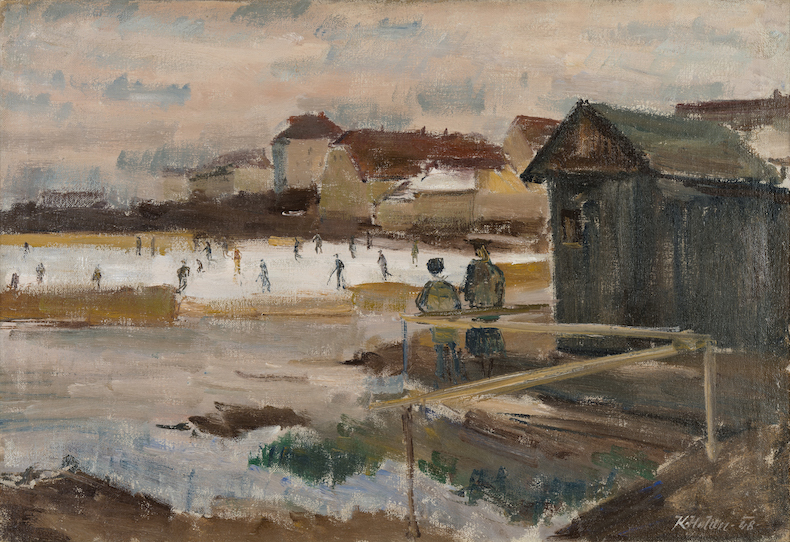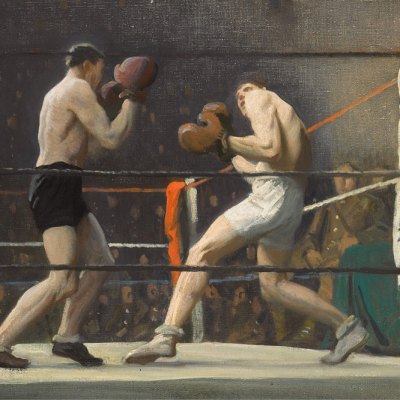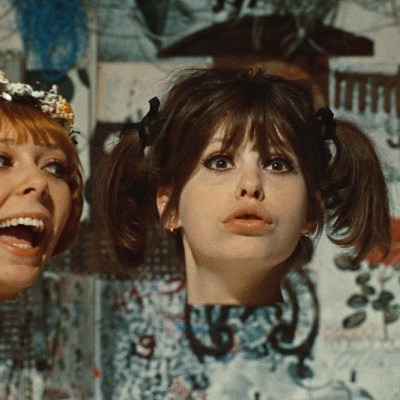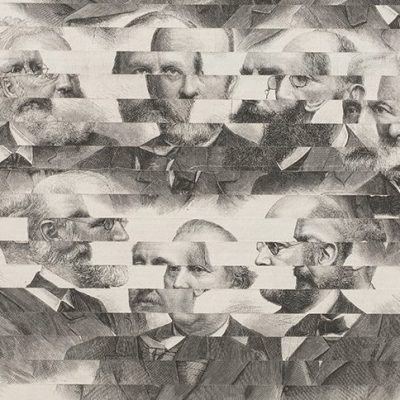Quickly: who comes to mind when you hear the name Hašek?
For many, the name conjures one of two faces – both Czech. One is that of Jaroslav (1883–1923), the drinker, raconteur, author of the unfinished satirical novel The Good Soldier Švejk, and founder of the Party of Moderate Progress Within the Bounds of the Law (in fact he was a radical anarchist who briefly found employment in the Red Army). In the mind’s eye he might appear well (if shabbily) dressed, complete with a bowler hat, or as a brainless caricature drawn by his roommate and illustrator Josef Lada.
The other belongs to Dominik. If you picture him, you see not a face at all but the mask of an ice hockey goalie. It is unusually round; this is Dominik’s characteristic silhouette. Painted on each side of the mask is the flaming wheel of the Detroit Red Wings, with whom he twice won the Stanley Cup, in 2002 and 2008. He is one of the patron saints of the street-hockey suburbia of the American Midwest.
The hockey fan and the bookworm may seem to exist only as a split personality, but such tortured souls would do well to visit Czechia, where the game has been elevated to an art and where artists often play the game. Currently, the exhibition ‘Get on the ice! Ice Hockey and Skating in Art’ is sprawled across the National Gallery’s Kinský Palace, on Prague’s main square. Dedicated to the history of ice hockey in early modern, modern and contemporary Czechoslovak art, the show finally makes it possible to connect Hašek with Hašek.
S.K. Orion (1965), Vlastimil Beneš. National Gallery Prague

The show takes a little while to find its legs. The introductory label states that ‘even before ice hockey began to be played, people had been skating extensively’, and that ‘the whole story begins with a series of artworks that show skating on frozen canals, lakes and rivers in the Low Countries in the 17th and 18th centuries’ – an undeniable but familiar claim. Our museums contain no shortage of cosy Dutch skating scenes by the offspring of Bruegel, so the few gathered here are hardly revelatory.
It is easy to forget that these early modern works encourage us to laugh at the plebs and their games, especially as they fall down or skate into traps. The rest of the show raises this question more effectively: is the Czechoslovak affinity for what the sculptor Krištof Kintera calls ‘grown men chasing a rubber dumpling around on the ice’ heroic or ridiculous? The answer is yes.
A better introduction is in the second room, where Josef Lada’s gouache Zima (‘Winter’) features a comical young skater, mouth agape. As is often the case with Lada, the joke has a bitter aftertaste: the year is 1944. Nearby, an aquatint etching by Tavík František Šimon, Kluziště pod Karlovým mostem (‘Ice Rink under the Charles Bridge’), from another war year, 1917, represents the other pole. It is earnest, romantic and extremely fine. These are the two possibilities when faced with a sport and its mythology: to sentimentalise it or to laugh it to shreds.
Winter Ice Rink (1948), Karel Holan. Private collection. Photo: National Gallery Prague

We learn that when Czech players arrived in France in 1909 for the inaugural Coupe de Chamonix, a short-lived international ice hockey tournament, they did not even have their own gear. But by the late 1920s, artificial ice had been installed on an island in the Vltava. Nazi and then Soviet occupation initially crushed the game’s ascent in the country, as did the disappearance in the foggy English Channel of the plane carrying half the Czechoslovak team to a couple of exhibition games in London in 1948. But by the 1960s, a new European tradition was on the rise: the sublimation of national rivalries into sports. After Soviet tanks rolled into Prague in 1968, the World Ice Hockey Championship was moved to Stockholm, where Czechoslovakia beat the Soviet Union, humming the phrase ‘Vy nám tanky, my vám branky’: ‘You give us tanks, we give you goals’. Teodor Rotrekl’s oil painting from 1981, here from a private collection and rightly advertised as one of the highlights of the show, captures the violent futurism of the Czechoslovak mood.
Still, the Czechs (now just the Czechs) did not win Winter Olympic gold until they beat Russia (now just Russia) 1–0 in Nagano, Japan, in 1998, with Hašek in goal. This is the high point in the hagiography of Dominik ‘The Dominator’ Hašek, as embodied (or is it punctured?) by Radek Macke’s Orthodox icon of the player in acrylic, oil and glitter. We can parse the iconography like medievalists: his divine name ДОМИНАТР is written in pseudo-Slavonic inside his gilded halo. On his blocker is the heraldic lion, symbol of Bohemia since the 12th century. On his jersey, a Buffalo – after all, he had long since joined the émigrés from the Eastern Bloc and found employment with the Buffalo Sabres in New York. One American hockey-stick manufacturer, shuttered in the 2000s, was called Christian – another sign of providence, perhaps. As for Hašek’s worn stick blade, we can imagine the faithful taking chips of paint with them as holy relics. Numerological magic is latent in this ironic, post-Byzantine work. There is a reason I wore number 39 when on the ice myself.
More laughs are found elsewhere: in Jiři Surůvka’s prints from the 1990s of Hitler, Göring, Mussolini, Stalin, Molotov and Voroshilov as awkward teammates on an outdoor rink; and especially in Laura Limbourg’s Hot Boys (2024), a painting of preening, erect, bewildered and ultimately sad players in the changing room, their jerseys hanging behind them. Perhaps this is what a small country’s pride in an increasingly marginal sport amounts to. And yet: the 2024 IIHF World Championship took place in Prague and Ostrava in May. The Czechs won.
‘Get on the ice! Ice Hockey and Skating in Art’ is at the National Gallery Prague until 27 October.



